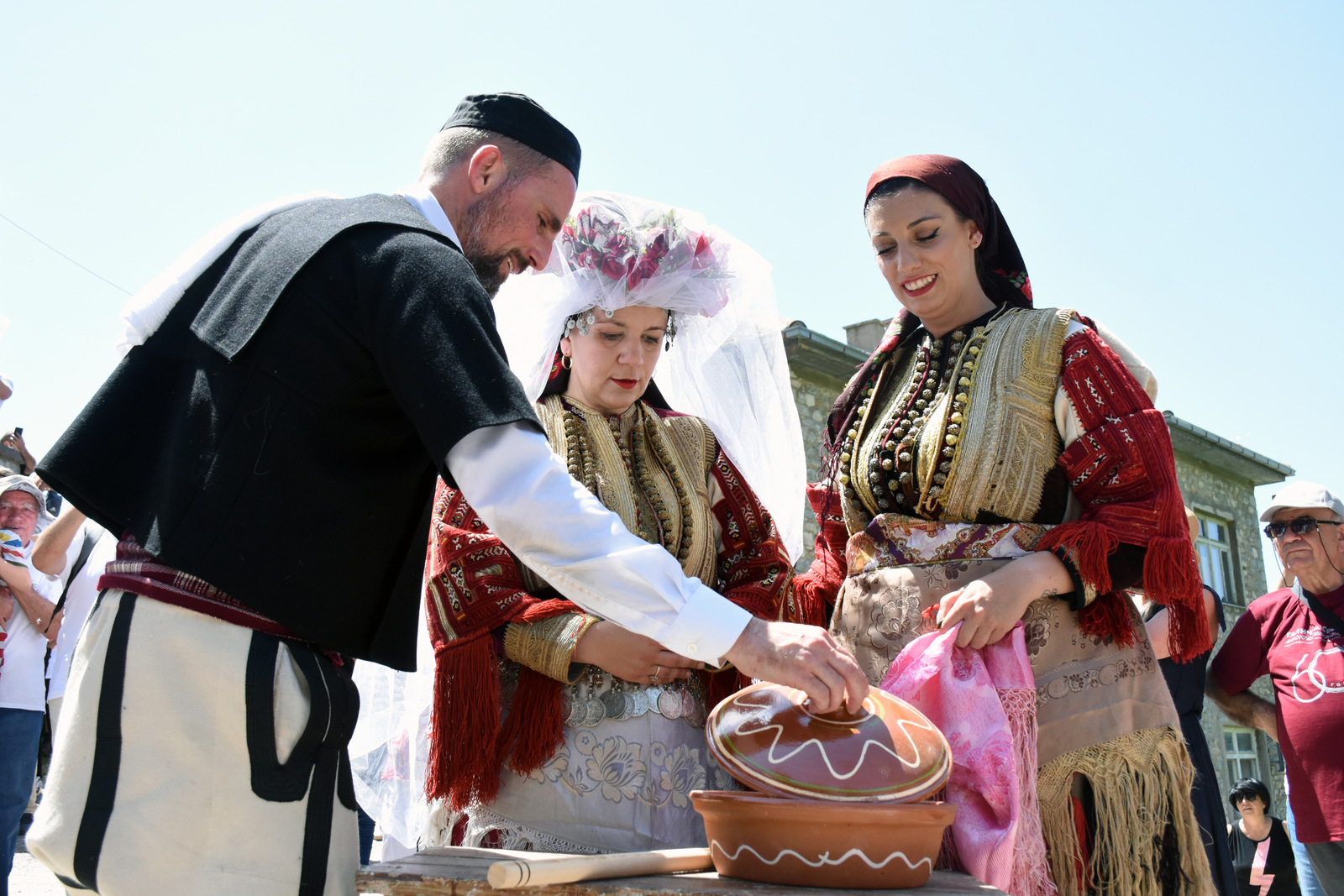
Galičnik wedding - Facebook profile of the Municipality of Galičnik
In North Macedonia many rural areas have been abandoned. To bring life back to the villages, at least in the summer, cultural events are growing, like the "Galičnik wedding", which celebrates 60 years
This July marked the 60th anniversary of the “Galičnik wedding”, in which the newlyweds dress up in folk costumes and the celebration is done according to folk customs, dances, and songs which date back several centuries ago. But this wedding is not just a reminder of the centuries-old Macedonian way of life. The village of Galičnik is one of hundreds of currently abandoned villages in the country, so thanks to the “wedding happening”, at least for a period in July, returns be full of people like a century ago.
In addition to weddings, fairs and festivals are organised in those abandoned villages, for chestnuts, making homemade food, horse riding. It can be said that Galičnik is the most famous and most attractive place trying to bring the residents back at least during the summer, where in this part of Macedonia it can be ten degrees cooler than average, considering the mountainous area.
Abandoned villages
More than a hundred years ago, in 1905, there were almost 5000 inhabitants in Galičnik, but they gradually moved out due to the difficult mountain living conditions: for example, the first asphalt road here was built only in 1973. The local inhabitants were mainly herders, but they also went to work abroad or in bigger cities throughout Macedonia, especially in the capital Skopje.
Since it used to be a “migrant village” in the past, it was a tradition in the summer, or rather on St. Peter's Day holiday, every July 12, for a large number of migrant workers to return to their native village and to have weddings with folk costumes and customs. Then the migrant men went to work in other countries again. Thus, in 1963, the cultural-folk event “Galičnik wedding” started.
Until 1991, the newlyweds were actors-extras, but since then there have been real weddings.
A complex ceremony
The wedding rituals last for two days. First they begin with decorating the flag with flowers and welcoming the musicians, i.e. the people with drums and bugles. Several traditional dances are played like Nevestinsko oro (Bridal dance), Svekrvinsko oro (Mother-in-law's dance), and Teshkoto oro (The hard dance).
On Sunday, a gun is fired three times from the groom's house to announce the festivities. The groom goes with his tayfa (friends and cousins) to the cemetery where the ancestors are buried and asks them for forgiveness before marrying. He tells them to forgive him for them not being at the table, as should it be.
After the best man is invited, the cousins shave the groom in front of his house. It is the symbol of transition from boy to man. Thus, he symbolically separates himself from the family and cleaves to his wife, establishing his own family.
All people from the groom's side go to bride's home on horses. When the procession approaches the house, the bride looks at the groom through a ring and utters "I see you through a ring, to enter your heart", which is one of the most emotional moments for brides.
The bride has two different costumes, one for a girl and the other for a married woman. A flag is placed on the bride's house by one of cousins of the groom. When they arrive at the bride's home, several men's and women's dances are performed. The bride gets on a horse and covers her face. They go to the groom's home where the groom's mother welcomes the bride with a sieve and a cake, knocks on her head with a sieve, goes around her three times, and asks her to be an obedient wife. Then, according to the Orthodox church tradition, the wedding takes place in the church of Saints Peter and Paul in Galičnik.
This year, the groom was ethnologist Oliver Andreevski, 28, originally from Galičnik, and the bride was psychologist Elisaveta Buloska, 31, originally from Ohrid. As required, at least one of them is from Galičnik. The men's wedding costume weighs about 8 kg, while the women's is more voluminous and weighs 24.
Bringing life back to rural areas
The event is also an occasion for foreign visitors in Macedonia to visit this region and get to know its traditions. They have the opportunity to watch part of the ceremony in front of them in the middle of the village, as there is an amphitheatre.
In North Macedonia there are more and more events like the Galičnik wedding. “Mariovо-Meglen cultural meetings” take place in Junefor people from the abandoned Mariovo area that has 30-40 villages to meet. Nevestinsko Poklonenie (The Bride Bow) is organised in the village of Konopnica near Kriva Palanka and is similar to Galičnik weddings.






